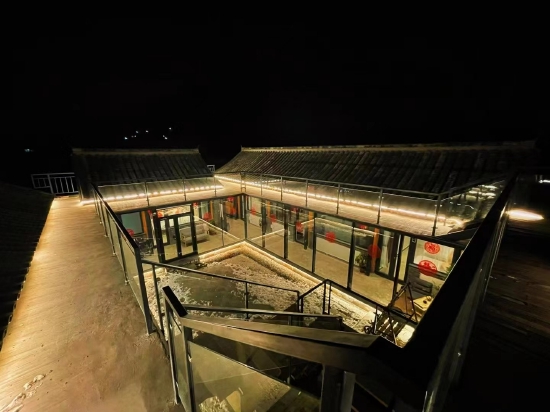With the demand for outbound tourism turning to domestic tourism and trans-provincial tourism turning to peripheral tourism, consumers’ demand for homestays has increased, and more attention has been paid to the safety and quality of homestays. The proportion of rural homestays has increased rapidly. At the same time, the government issued a series of policies and industry standards to increase support for the development of homestays. The hot market and policy support have promoted the entry of relevant enterprises.
 The implementation of the rural revitalization strategy is the overall focus of the “three rural” work in the new era. The development of rural tourism is an important force for rural revitalization, and also broadens the channels for farmers to increase their income. Rural homestays pay attention to personality and experience, emphasizing human feelings, homesickness and comfortable and relaxed experience. The construction of rural homestays is an important aspect of the development of rural tourism. The distinctive rural homestays can add a lot of points to the local tourism development and even become tourist attractions.
The implementation of the rural revitalization strategy is the overall focus of the “three rural” work in the new era. The development of rural tourism is an important force for rural revitalization, and also broadens the channels for farmers to increase their income. Rural homestays pay attention to personality and experience, emphasizing human feelings, homesickness and comfortable and relaxed experience. The construction of rural homestays is an important aspect of the development of rural tourism. The distinctive rural homestays can add a lot of points to the local tourism development and even become tourist attractions.
At present, there are about four types of rural homestays: scenic resorts, which combine natural or artificial scenic spots with the nature of homestays; Artistic experience type, such as the combination of traditional handicrafts such as carving and lantern making with folk houses; Rural experience type, combining agricultural experience projects with accommodation; The retro business type, mostly in ancient towns and old houses, complements the surrounding environment.
Rural tourism has flourished for more than 30 years, but due to its scattered location and other objective conditions, it has not yet formed a large-scale development trend. With the rapid growth of domestic tourism demand, the huge market attracts leading enterprises in the tourism industry, and financial capital is also eager to try. The participation of head enterprises should be divided into two parts. On the one hand, it is conducive to the standardization, scale and value maximization of the market; On the other hand, we should pay more attention to differentiation and individuation, and explore a way of “one village, one accommodation and one policy” according to local conditions to fully protect the interests of agricultural and rural farmers.
The Ministry of Culture and Tourism will issue a policy document to promote the high-quality development of rural homestays and formulate a three-year action plan for the cultivation of grade tourism homestays. At the macro level, the national policies and regulations will escort the high-quality development of rural homestays, which is more conducive to the market entering a stage of steady progress, taking into account the interests of farmers, tourists, enterprises and other parties, ensuring the smooth operation of the market, and enhancing the confidence of domestic tourism, especially rural tourism.
At the medium level, the head enterprises should participate more to make the market cake bigger, and at the same time, they should shoulder social responsibilities, take the development of rural homestays as an opportunity to drive regional economic development, which includes providing more jobs, improving local living conditions, promoting harmonious ecological construction and other all-round and multi-angle promotion of common prosperity. At the same time, tourism products should also be constantly upgraded to attract a wider range of tourists, so that tourists can “want to come, want to come, and come again”, and establish a long-term emotional connection with tourists with agricultural culture and regional charm, so that rural tourism shows a trend of sustainable development.
At the micro level, the practitioners of rural homestay should receive professional training to connect with tourists. At the same time, they should be a good communicator of culture, tell rural stories, spread the voice of civilization, let homestay show homesickness, let the story retain homesickness, and let tourists feel homesickness.





